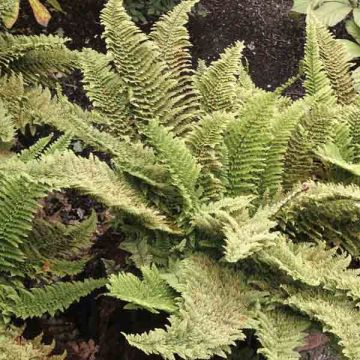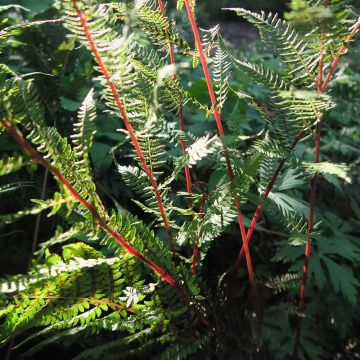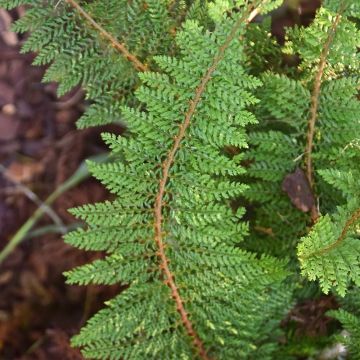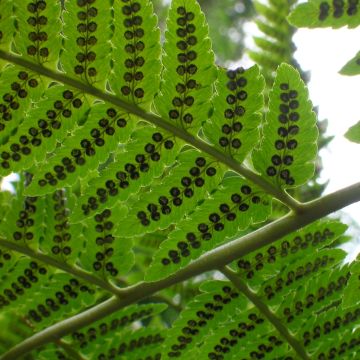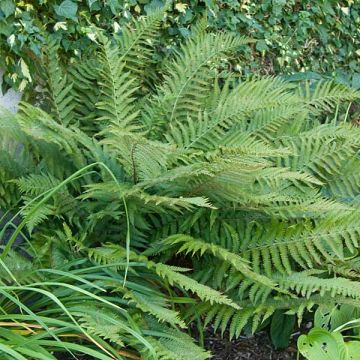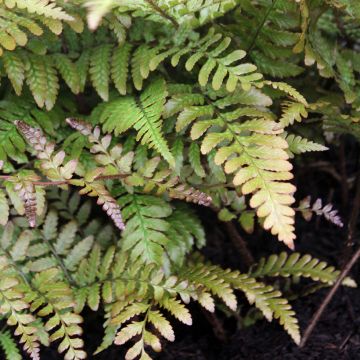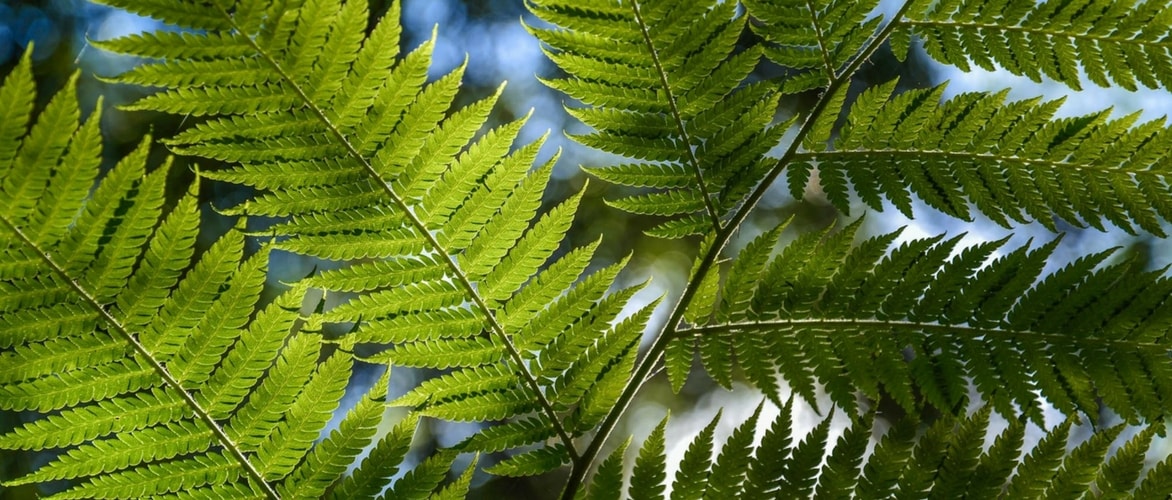
Planting arborescent ferns
for an exotic and lush flowerbed!
Contents
Tree ferns bring an incredible exotic look to the garden! Particularly elegant and imposing, they structure the flower beds and bring a sense of freshness with their lush foliage. They grow slowly and form a trunk, known as a stipe, which can reach around ten metres in height. This is actually an upright rootstock. At the top of this, they bear gigantic fronds, which often measure 2 metres long. Native to Australia and Tasmania, Dicksonia antarctica is one of the hardiest species, tolerating temperatures down to -8 °C. However, unless you live in the Mediterranean region, it is advisable to protect it from the cold, for example by growing it in a pot and bringing it indoors under a veranda for the winter. Discover all our tips for successfully planting tree ferns in your garden!
When to plant a tree fern?
The ideal time to plant a tree fern is in spring, after the last frosts. The soil begins to warm up, providing conditions conducive to rooting and the recovery of the plant. You may also consider planting in early autumn in regions with a mild climate, to take advantage of the residual warmth of the soil and natural moisture. Avoid periods of intense summer heat and cold seasons, as tree ferns are sensitive to thermal stress and frost.
Where to plant tree ferns?
Tree ferns thrive in humid and warm atmospheres without direct sunlight. Place them in partial shade, in a location protected from cold, drying winds. The key to successful cultivation is the humidity level in the air; it must be as high as possible, otherwise the foliage will scorch.
Plant your fern at the edge of a woodland, near a house or building, or on a terrace facing north-west. Observe the plants already present nearby; they are good indicators: if wild ferns, nettles, and impatiens grow spontaneously, then you have found the best location!
Tree ferns prefer neutral or acidic soils, rich in humus, and do not tolerate stagnant water or overly calcareous soils. The soil should be well-drained but always moist, without drying out in summer. A mix of garden soil, leaf mould, and well-decomposed compost will be ideal. An organic mulch (pine bark, dry ferns, or fallen leaves) will help retain soil moisture and protect the roots.

Impressive in size, tree ferns bring a lot of exoticism to the garden!
Discover other Ferns
View all →Available in 1 sizes
Available in 2 sizes
Available in 1 sizes
Available in 1 sizes
Available in 2 sizes
Available in 2 sizes
Available in 2 sizes
Available in 1 sizes
Available in 2 sizes
Available in 2 sizes
How to plant them?
To plant a tree fern in the garden:
- Soak the pot in a basin of water for 10 minutes.
- Using a shovel or a spade, dig a planting hole three times the height and width of the pot. If your soil is heavy, place a layer of gravel or pumice at the bottom of the hole and, if necessary, add 1/4 of turf and 1/4 of vermiculite which you will mix with your topsoil.
- Remove your fern being careful not to damage the foliage. This operation requires two people: while one holds the fern by the trunk, the other gently taps the pot by hand to release it. If necessary, use pruning shears to cut any roots that may hinder the removal.
- Place your plant in the planting hole ensuring that the trunk is straight and level the soil.
- Firm the soil with your hand, then water abundantly the soil and the stipe.
How to care for a tree fern?
The vital part of the tree fern is located at the top of the stipe (trunk), where the new fronds emerge. It is therefore essential to keep this area always moist to ensure the survival of the plant.
- Watering: In hot and dry weather, water the top of the stipe daily with non-calcareous water, preferably in the evening to limit evaporation. Also, ensure that the soil remains cool without excess water. You can regularly mist the foliage to recreate a humid atmosphere.
- Fertilisation: Apply a liquid fertiliser specially for “green plants” once or twice a year, in spring and summer. Dilute it to 50% in the watering water to avoid burning the roots. Adding well-decomposed compost at the base can also naturally enrich the soil.
- Winter protection: Below -7 °C, it is essential to protect the plant. Cover the top of the stipe with a winter fleece or a “straw hat” to protect the young fronds. This protection allows the fern to withstand temperatures dropping to -12 °C for short periods. You can also generously mulch the base with fallen leaves or bark to insulate the roots from frost.
- Pot culture: In regions with harsh winters, prefer growing in a large pot. Bring the fern indoors to a conservatory, a cold greenhouse, or a bright frost-free space during winter. Reduce watering during this period while maintaining a minimum of moisture.
- Subscribe!
- Contents
































